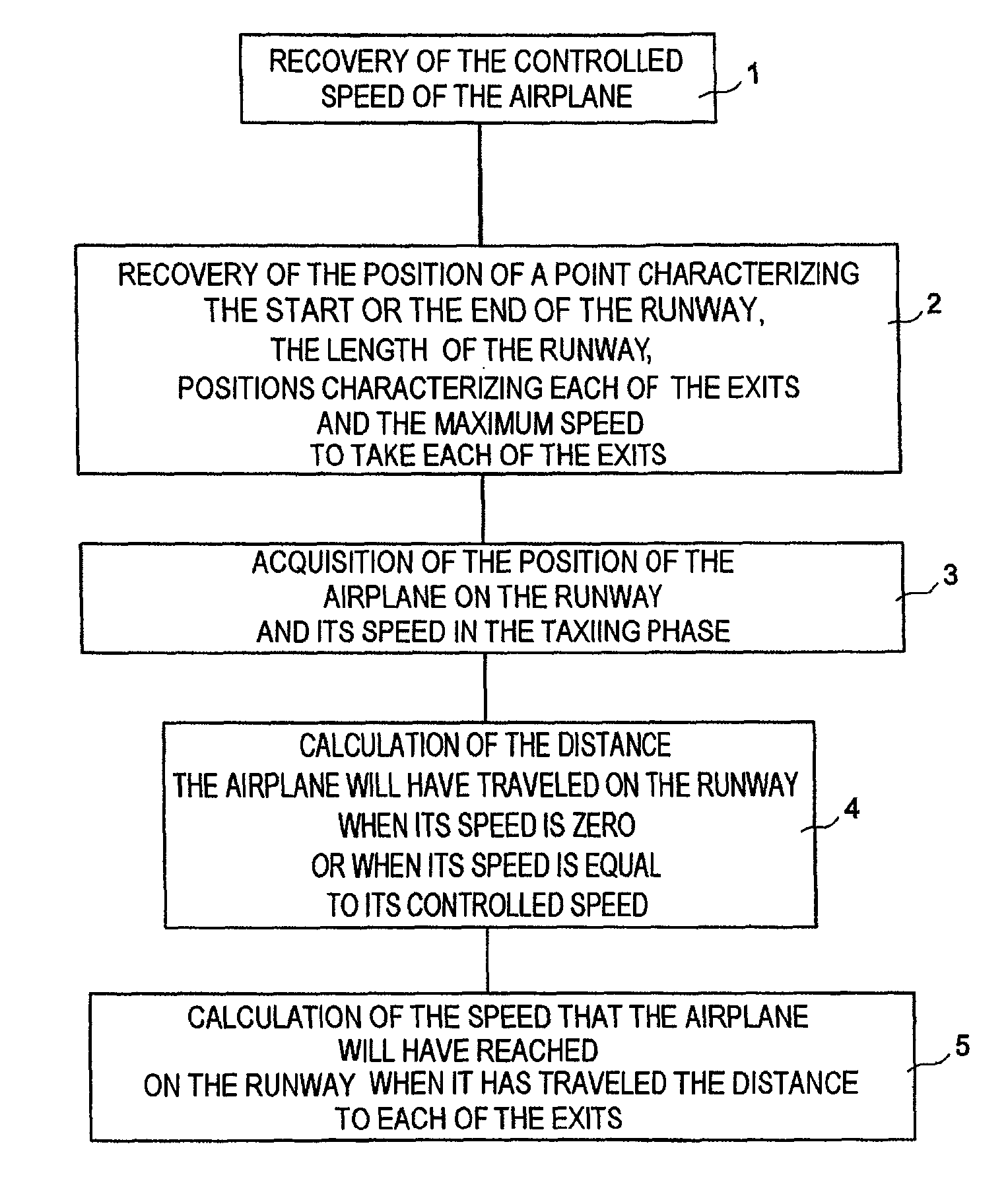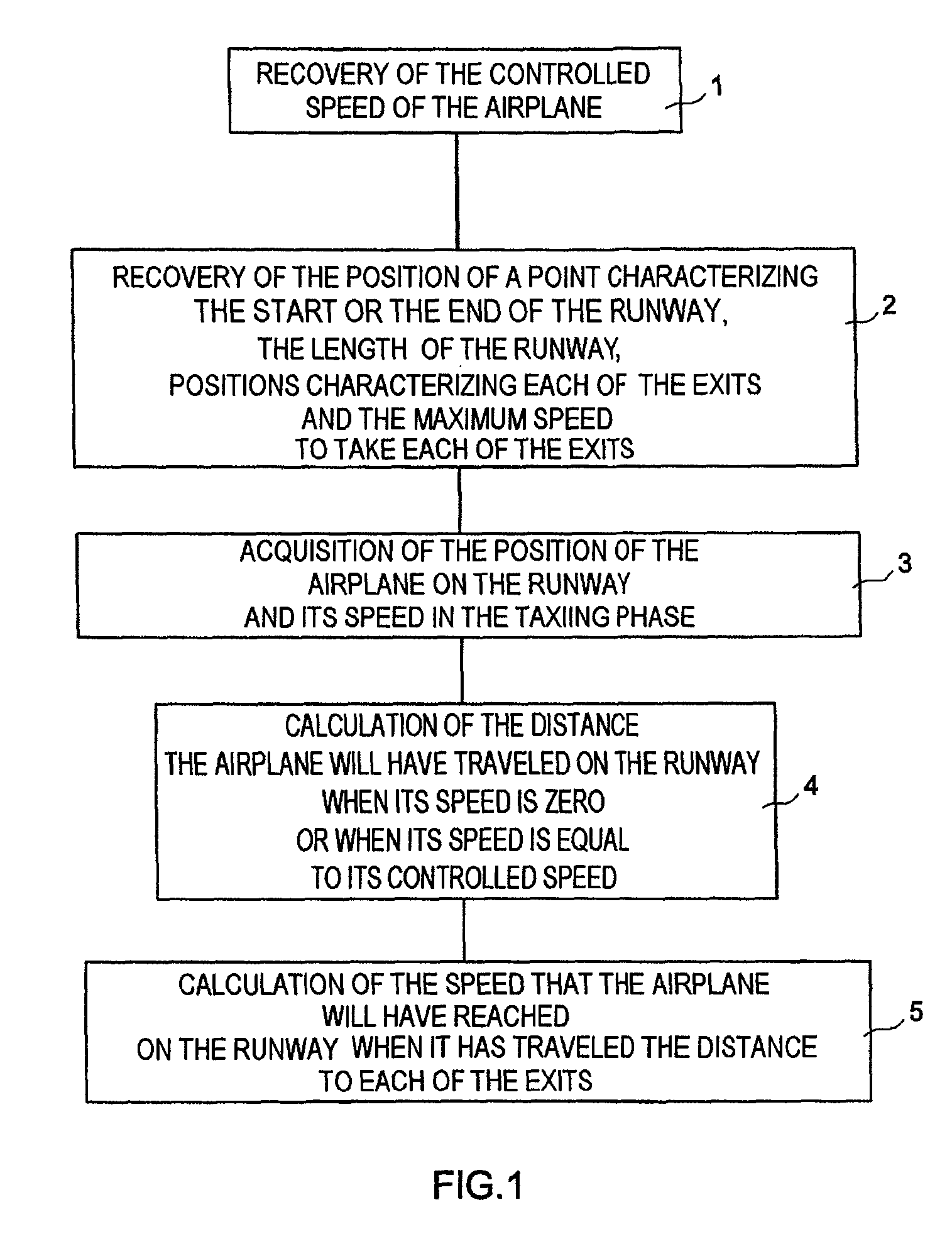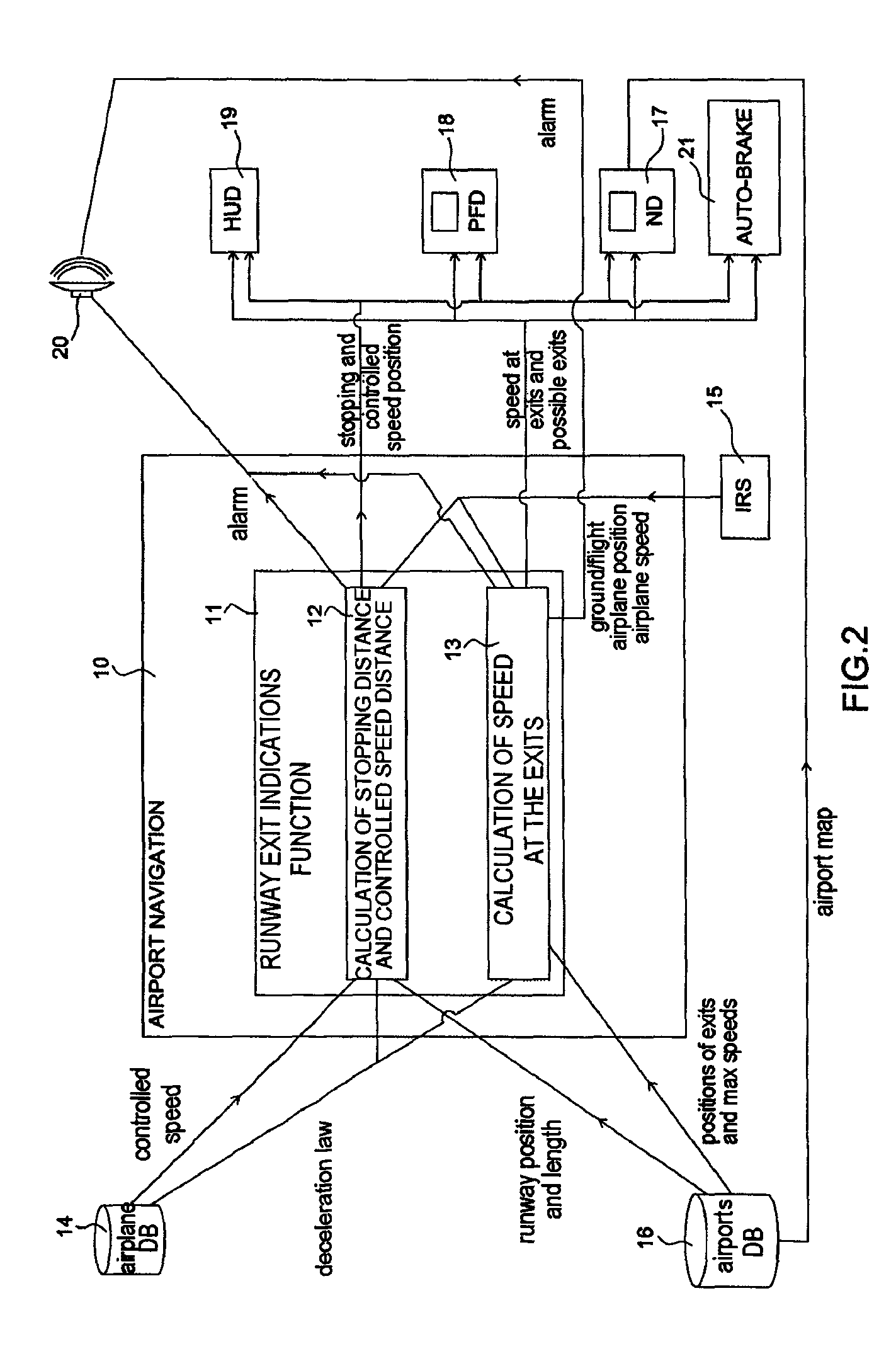System and method to assist in the braking of an aircraft on a landing runway
a technology for landing runways and aircraft, which is applied in the direction of automatic braking sequences, aircraft braking arrangements, instruments, etc., can solve the problems of affecting the speed of landing, excessive fuel consumption, and difficult phases of taxiing maneuvers in airports today
- Summary
- Abstract
- Description
- Claims
- Application Information
AI Technical Summary
Benefits of technology
Problems solved by technology
Method used
Image
Examples
Embodiment Construction
[0033]FIG. 1 illustrates by a flow diagram the possible steps of the method according to the invention.
[0034]It comprises a phase 1 of recovery of the controlled speed of the airplane, which is the speed below which the airplane is capable of performing any maneuver while taxiing. For example, for an airliner it can be of the order of 10 to 20 knots. Trying a demanding maneuver, such as a half-turn for example, above this speed could damage the front landing gear or even result in loss of control of the airplane. Only undemanding maneuvers, such as gentle turns, can be undertaken without risk above this speed. The controlled speed depends on the type of airplane and, generally, the controlled speed reduces as the weight of the airplane increases.
[0035]The method also includes a phase 2 of recovery of the position of a point characterizing the start or the end of the runway, the length of the runway, positions characterizing each of the exits from the runway and the maximum speed to ...
PUM
 Login to View More
Login to View More Abstract
Description
Claims
Application Information
 Login to View More
Login to View More - R&D
- Intellectual Property
- Life Sciences
- Materials
- Tech Scout
- Unparalleled Data Quality
- Higher Quality Content
- 60% Fewer Hallucinations
Browse by: Latest US Patents, China's latest patents, Technical Efficacy Thesaurus, Application Domain, Technology Topic, Popular Technical Reports.
© 2025 PatSnap. All rights reserved.Legal|Privacy policy|Modern Slavery Act Transparency Statement|Sitemap|About US| Contact US: help@patsnap.com



